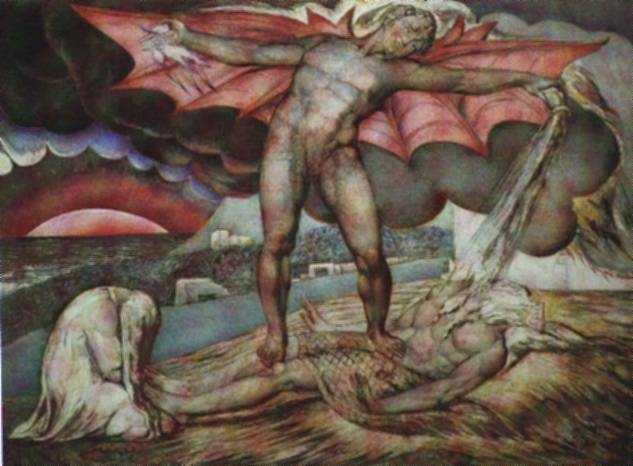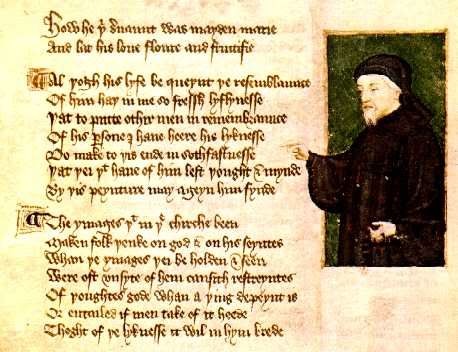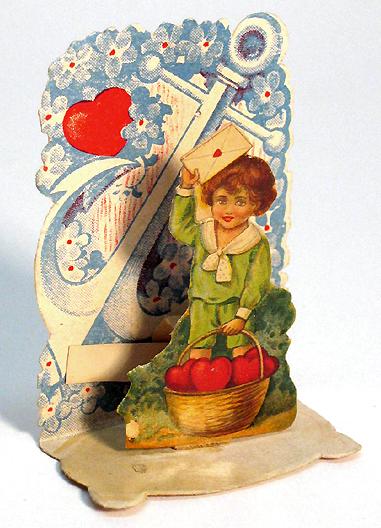 |
| The examination of Job by William Blake |
JOB was a faithful servant of the God of Israel in the Hebrew Bible/Old Testament and considered a prophet in Islam. The three major religions considered him to be a wealthy man of his time who lived in the Land of Uz with his large family and extensive flocks. He was a righteous man in the eyes of the Creator and was always careful to avoid doing evil (Job 1:1). One day Satan appeared before the God of the universe and challenged him about Job's faithfulness, asking him to allow him to curse him and prove him wrong where Job was concerned. God allowed the challenge to test Job as long as he [Satan] did not "kill Job". Satan agreed.
 |
| Depiction of Job and Jethro before Pharaoh |
The Jewish View
(from Wikipedia.com)
Some Rabbinic scho-lars maintain that Job was in fact one of three advisers that Pharaoh consulted, prior to taking action against the increasingly mul-tiplying "Children of Israel" during the time of Moses' birth. The episode is mentioned in the Talmud (Tractate Sotah): Balaam gives evil advice urging Pharaoh to kill the Hebrew male new-born babies; Jethro opposes Pharaoh and tells him not to harm the Hebrews at all, and Job keeps silent and does not reveal his mind even though he was personally opposed to Pharaoh's destructive plans. It is for his silence that God subsequently punishes him with his bitter afflictions. However, the book of Job itself contains no indication of this, and to the prophet Ezekiel, Yahweh refers to Job as a righteous man of the same caliber as Noah and Daniel. There is a minority view among Rabbinical scholars, for instance that of Rabbi Simeon ben Laqish, that says Job never existed (Midrash Genesis Rabbah LXVII). In this view, Job was a literary creation by a prophet who used this form of writing to convey a divine message. On the other hand, the Talmud (in Tractate Baba Batra 15a–16b) goes to great lengths trying to ascertain when Job actually lived, citing many opinions and interpretations by the leading sages. Job is further mentioned in the Talmud as follows:
- Job's resignation to his fate (in Tractate Pesachim 2b).
- When Job was prosperous, anyone who associated with him even to buy from him or sell to him, was blessed (in Tractate Pesachim 112a).
- Job's reward for being generous (in Tractate Megillah 28a).
- King David, Job and Ezekiel described the Torah's length without putting a number to it (in Tractate Eruvin 21a).
The Christian View
(from Wikipedia.com)
Christianity accepts the Book of Job as canon in the Old Testament and thus contains the same information regarding Job as discussed above in the Hebrew Bible. In addition, Job is mentioned in the New Testament: the Epistle of James 5:11 cites Job as an example of perseverance in suffering. The New Testament also quotes and references the Book of Job throughout the scriptures.
Job's declaration "I know that my Redeemer lives" (Job 19:25) is considered by some Christians to be a proto-Christian statement of belief, and is the basis of several Christian hymns. He is commemorated as a patriarch by the Lutheran Church—Missouri Synod in their Calendar of Saints on May 9, and in the Calendar of Saints of the Armenian Apostolic Church on August 30.
Messianic anticipation in the Book of Job:
In Chapter nine, Job recognizes the chasm that exists between him and God: “For he is not a man, as I am, that I might answer him, that we should come to trial together.” Job’s regret is that he has no arbiter to act as a go-between; that Job cannot reconcile himself with God anticipates the need for the Messiah to become incarnate. In verse 33, Job wishes that there was an “umpire” to decide between him and God. This idea of a divine arbiter is returned to at Job 16:19. Job again expresses his desire for a witness, and then declares, “my eyes pour out tears to God, that he would maintain the right of a man with God”. Job addresses God, desiring that God will advocate on Job’s behalf with himself. Job knows that no man such as himself, conceived in sin, can appeal to God on his behalf; so God must do it himself. Job’s faith in this arbiter is again brought up in chapter 19. It is commonly accepted that the “Redeemer” of 19:25 is the same person as the witness of 16:19. This verse in particular is often seen as an anticipation of Christianity. The Christ, as both God and Man, is seen in Christian theology as fulfilling this role in the redemption of man and of the earth and in the final judgment against evil.
The Islamic View
(from Wikipedia.com)
 |
| Depiction of Job's suffering |
Ayyub in the Qur'an:
The Qur'an describes Ayyub [Job] as a righteous servant of Allah [God], who was afflicted by suffering for a lengthy period of time. However, the Qur'an clearly states that Job never lost faith in God and forever called to God in prayer, asking Him to remove his affliction:
"And Job, when he cried out to his Lord: "Great harm has afflicted me, and you are the Most Merciful of the merciful." So We answered him, lifted his suffering, and restored his family to him, and their like with them - a mercy from Us, and a reminder for the worshippers." - Qur'an, sura 21 (The Prophets)
The narrative goes on to state that after many years of suffering, God ordered Job to "Strike with thy foot!". At once, Job struck the ground with his foot and God caused a cool spring of water to gush forth from the Earth, from which Job could replenish himself. The Qur'an states that it was then that God removed his pain and suffering and He returned Job's family to him, blessed him with many generations of children and granted him great wealth. In addition to the brief descriptions of Job's narrative, the Qur'an further mentions Job twice in the lists of those whom God had given special guidance, wisdom and inspiration (IV:163) and as one of the men who received authority, the Book and the gift of prophethood (VI:84)
* ~ * ~ * ~ * ~ * ~ * ~ * ~ * ~ * ~ *
The final outcome of Job's ordeal resulted in him being rewarded [by God] for enduring the suffering and remaining faithful. His righteousness was recompensed. God blessed Job and made him wealthier than before and doubled his flocks. While his first wife demanded that Job curse the God of Abraham to alleviate his suffering, she and her ten children were killed due to consequences of her request. However, God provided for His faithful servant another family (which included ten more children) and blessed them too. Job lived for another one hundred and forty years after his encounter with Satan. (Job 42:16)
In addition to the Book of Job, the biblical character of Job appears in several books:
In addition to the Book of Job, the biblical character of Job appears in several books:
- He is mentioned by the prophet Ezekiel. (Ezekiel 14:14, 20)
- He is briefly referenced in the Christian Epistle of James. (James 5:11)
- He is discussed as a prophet in the Qur'an. (Qur'an 21:83-84)
- He is also the protagonist of pseudepigraphal book called the Testament of Job.
- He is also mentioned in the Doctrine and Covenants, one of the four sacred texts of The Church of Jesus Christ of Latter-day Saints (LDS Church).
The Moral of the Story:
The story of Job illustrates the depth of despair and the depth of God's promises. Being obedient to God and trusting in Him produces prosperous results. We [mankind] are never tested beyond our ability. Sometimes having the best of everything becomes obsolete if you do not have the Faith to endure the hardships that Life sometimes presents to us. Stand strong in the face of Adversity and it will strengthen our experiences.
 |
| Depiction of Job and his second family |








